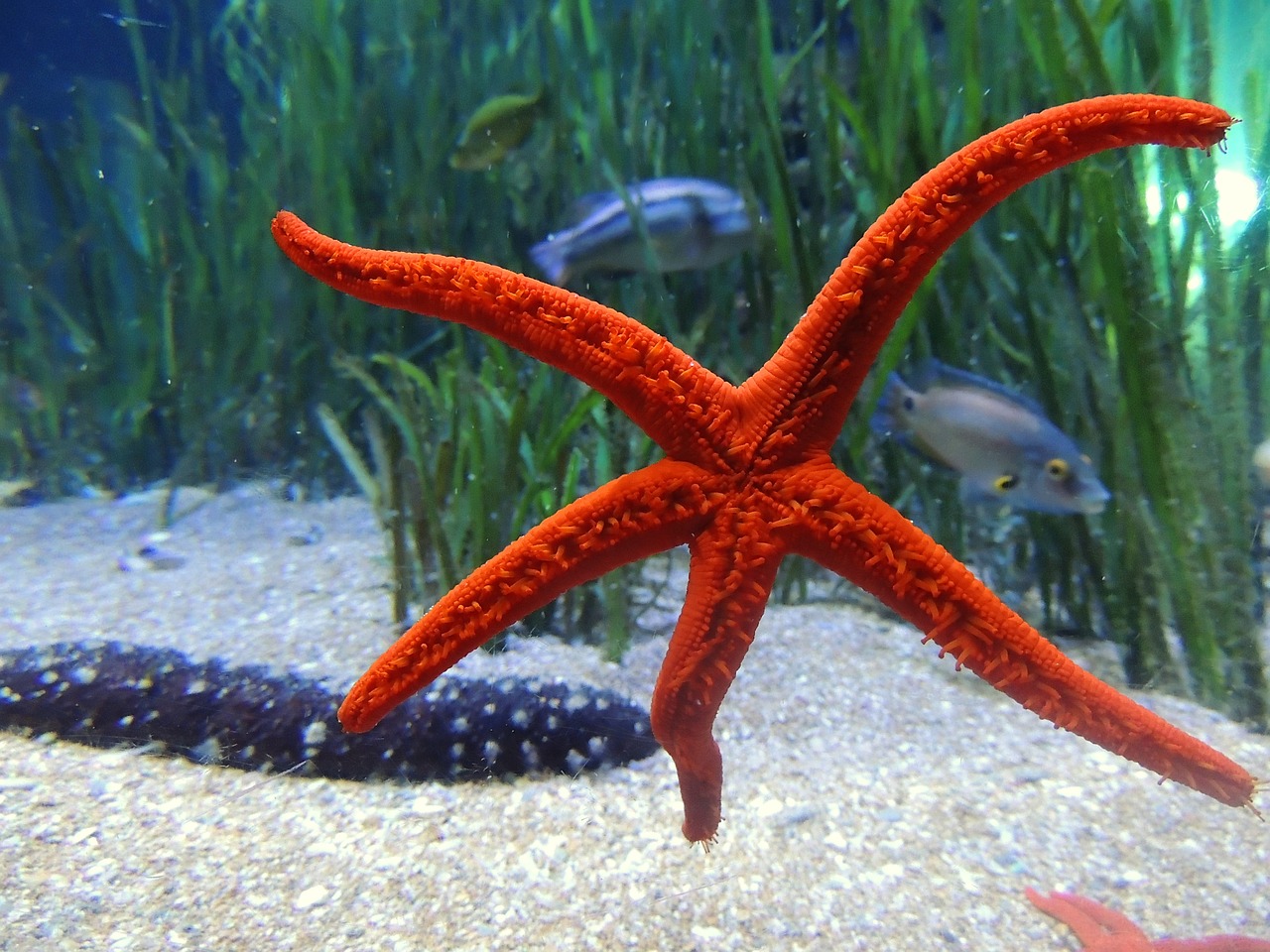
Pre-reading questions:
- What do you think sea stars look like?
- How do you imagine sea stars moving and living in the ocean?
Vocabulary:
- conventional /kuhn-VEN-shuh-nl/
- boast /bohst/
- creation /kree-EY-shuhn/
- discovery /dih-SKUHV-uh-ree /
- contribution /kon-truh-BYOO-shuhn/
[adjective] – traditional and ordinary
The small town’s celebration adhered to conventional festivities, with families gathering for a traditional parade and a feast of ordinary yet cherished dishes.
[verb] – to have or possess something to be proud of
The accomplished author could boast a vast collection of published novels, each contributing to the literary world in its own unique way.
[noun] – the act of creating something, or the thing that is created
The artist’s studio was a place of constant creation, where canvases transformed into vibrant paintings, showcasing the endless possibilities of artistic expression.
[noun] – the process of finding information, a place, or an object, especially for the first time, or the thing that is found
The archeologist’s latest discovery unveiled a hidden chamber in the ancient ruins, shedding light on a previously unknown aspect of the civilization’s history.
[noun] – something that you contribute or do to help produce or achieve something together with other people, or to help make something successful
The collaborative efforts of the research team made a significant contribution to the field of medicine, pioneering new treatments and advancing healthcare practices.
Article reading:
Belonging to the echinoderm group alongside sea urchins and sea cucumbers, sea stars boast a distinctive body plan featuring five equal sections, diverging from the typical bilateral symmetry seen in most animals. To decipher the genetic complexities of sea stars, the study utilized cutting-edge techniques, including microcomputed tomography scanning. This technology facilitated the creation of a detailed 3D map of genetic expression during sea stars’ development. Results uncovered the presence of genes associated with head development throughout the body, challenging long-standing assumptions and sparking a reexamination of the evolutionary history of these captivating marine creatures. This discovery not only sheds light on Earth’s life evolution but also expands our understanding of biology, prompting questions about echinoderms’ distinct body plans and their common ancestry with other animals. Exploring sea stars’ secrets takes us on a journey to uncover the intricacies of ocean ecosystems, offering potential contributions to ecological and biomedical advancements.
Comprehension questions
- What is the main focus of the genetic study led by Laurent Formery regarding sea stars, and how does it challenge the conventional understanding of these marine creatures?
- According to the article, how many equal sections does the distinctive body plan of sea stars boast, and how does it differ from the typical symmetry observed in most animals?
- What advanced techniques were used in the study to decipher the genetic complexities of sea stars, and how did this technology contribute to the research findings?
- How does the article describe the sea stars’ body structure, and what revelation does the genetic exploration bring about their evolutionary changes over time?
- In what ways does the newfound knowledge about sea stars, as mentioned in the article, potentially contribute to both ecological and biomedical advancements, and why is this information considered groundbreaking?
Discussion questions
- Have you ever encountered a sea star in person or seen one in an aquarium? If yes, what was your experience like? If not, would you be interested in observing sea stars after learning about their unique body structure?
- Have you ever been curious about the genetic makeup of animals or organisms? If yes, what sparked your interest? If not, do you think this article has influenced your curiosity about genetic studies in nature?
- Do you find the revelation that sea stars are essentially walking heads without torsos or tails surprising, given the traditional understanding of their body structure?
- What do you think might be the implications of the discovery that sea stars are essentially walking heads without torsos or tails? How could this change in understanding impact future research in marine biology?
- In the article, the study challenges conventional beliefs about sea stars. How important do you think it is for scientific knowledge to evolve and challenge traditional ideas? Can you think of other instances in science where new discoveries have reshaped our understanding of a particular subject?